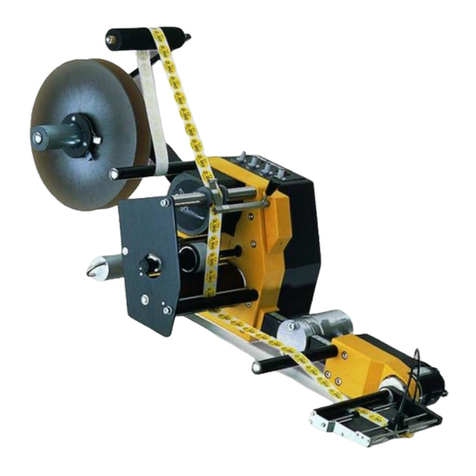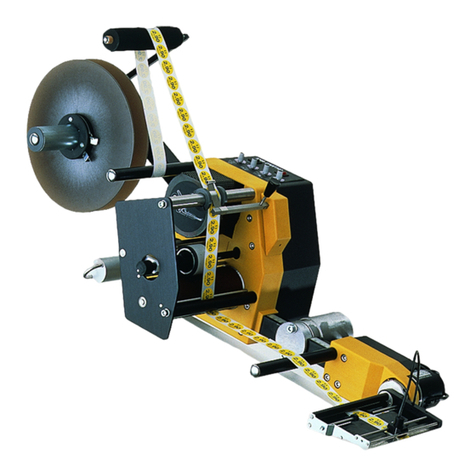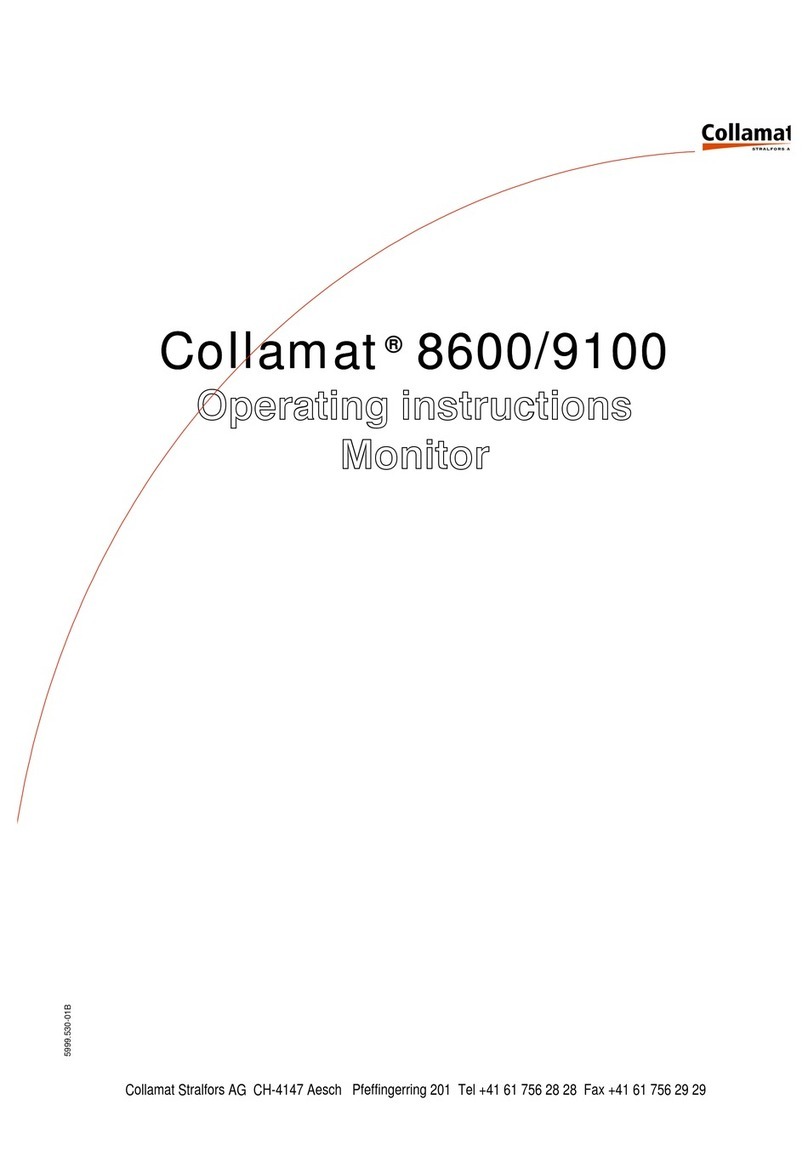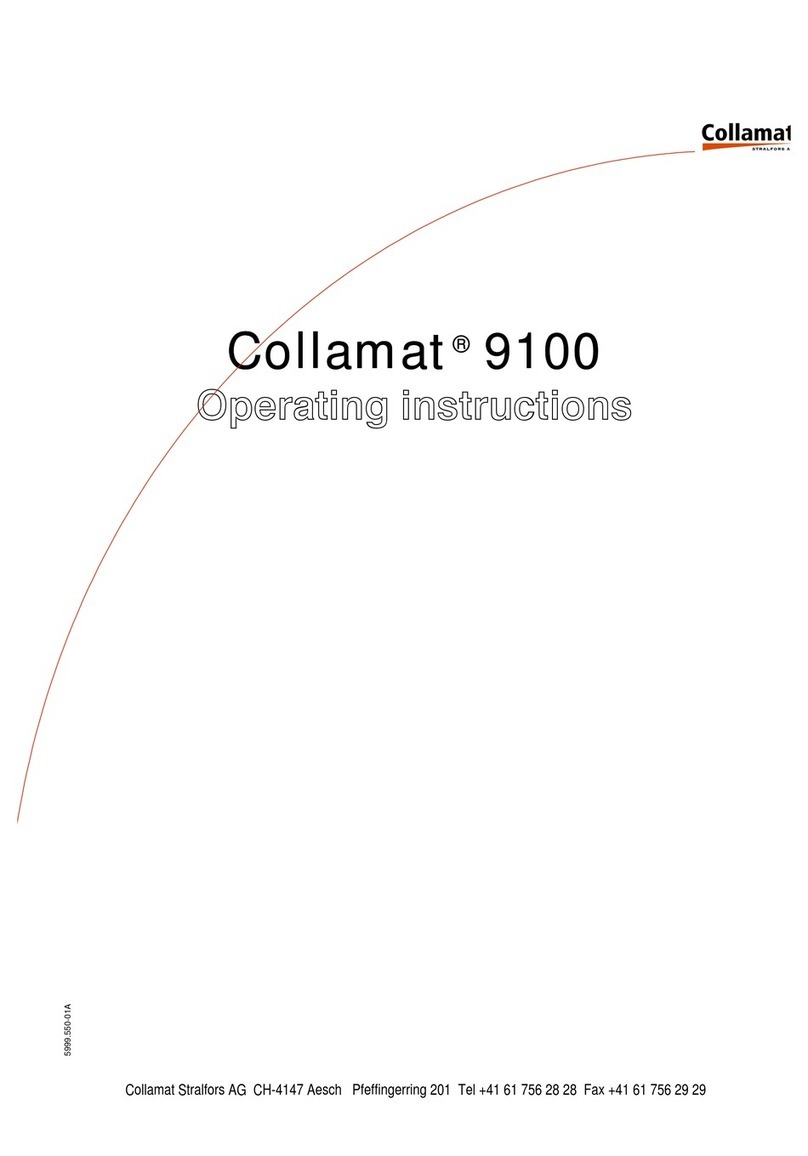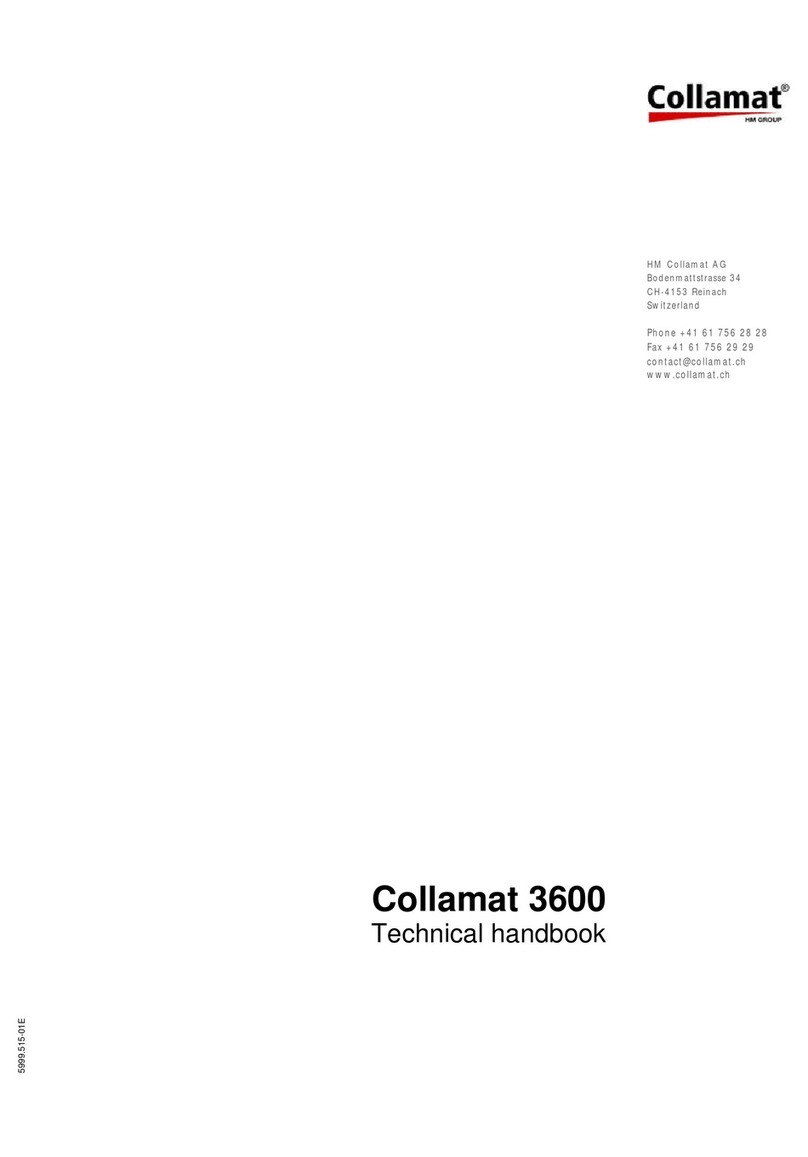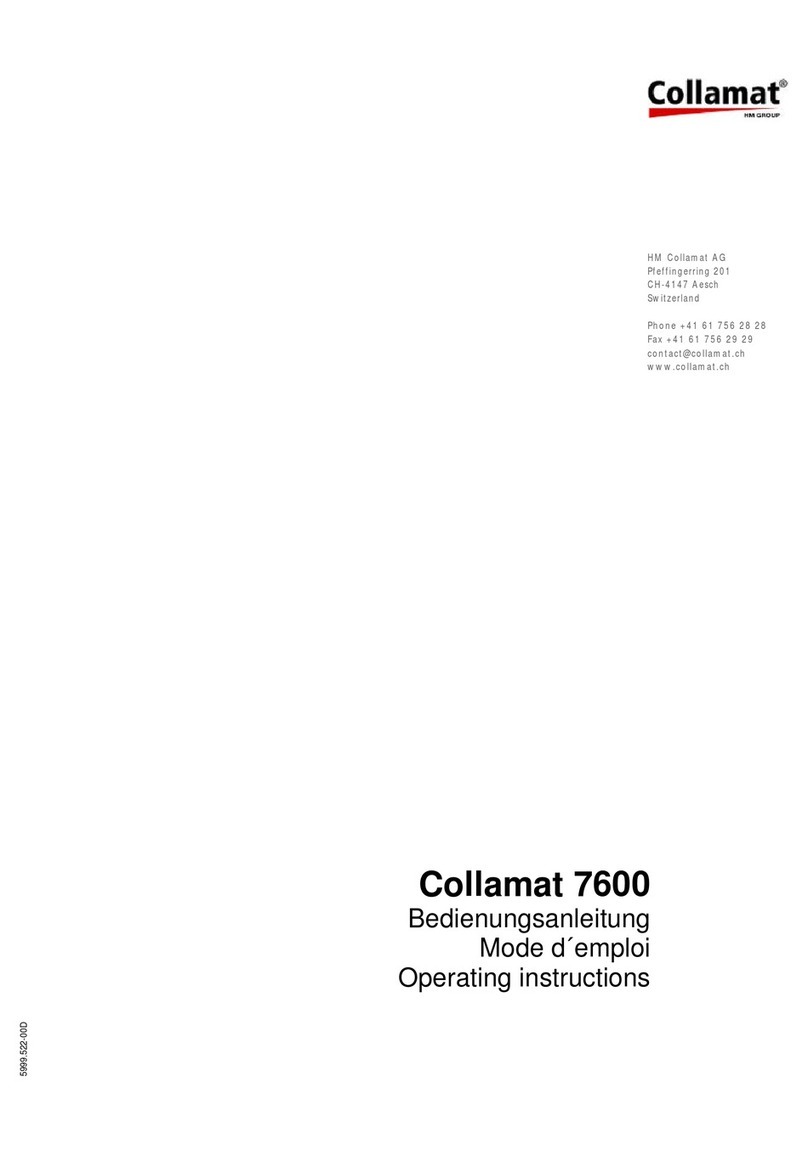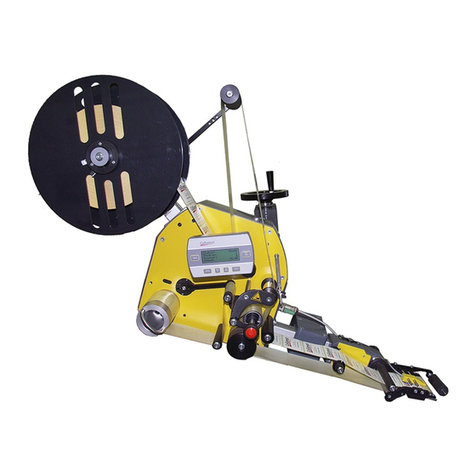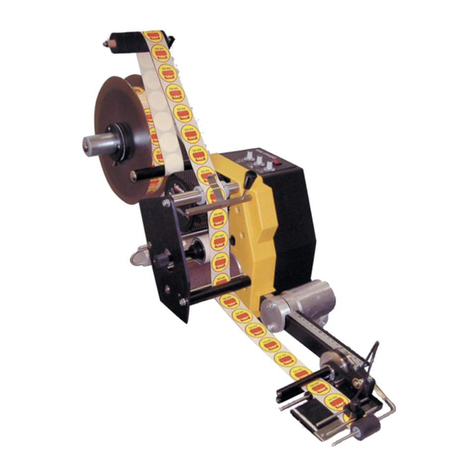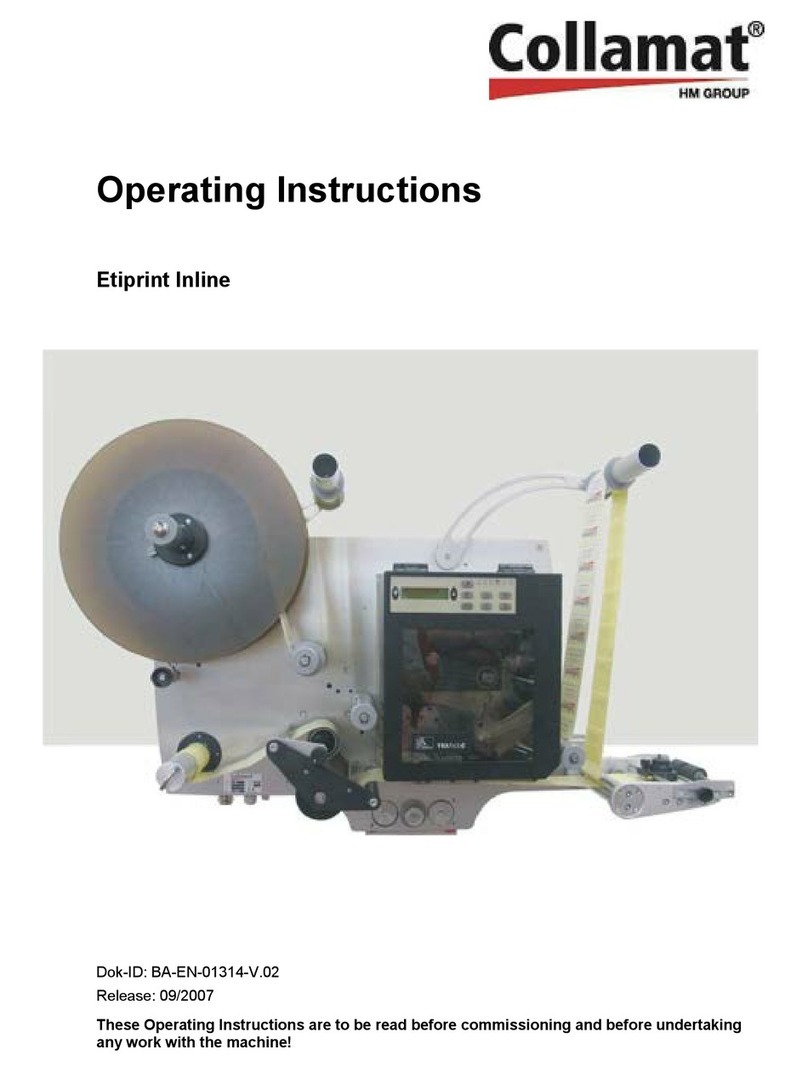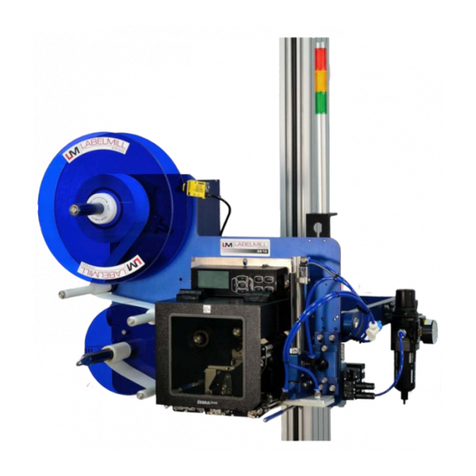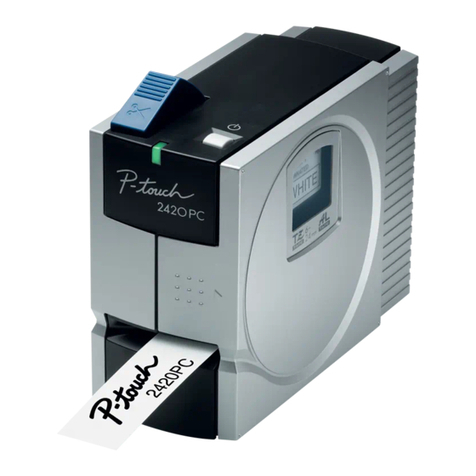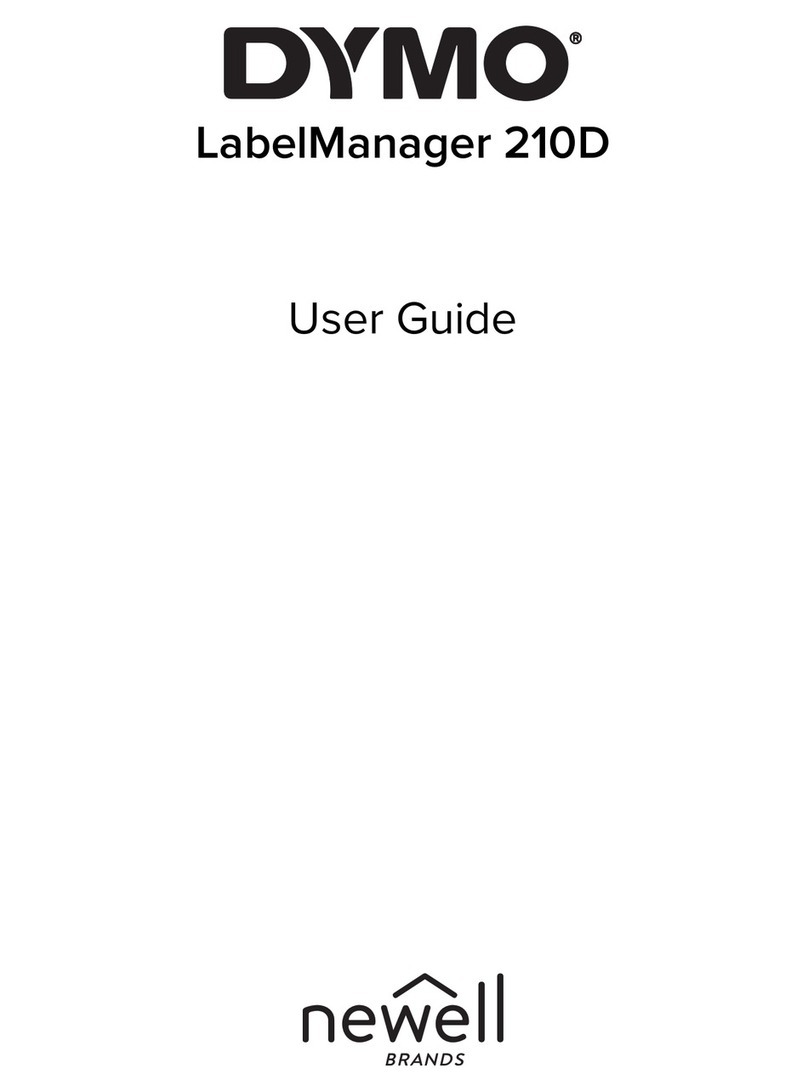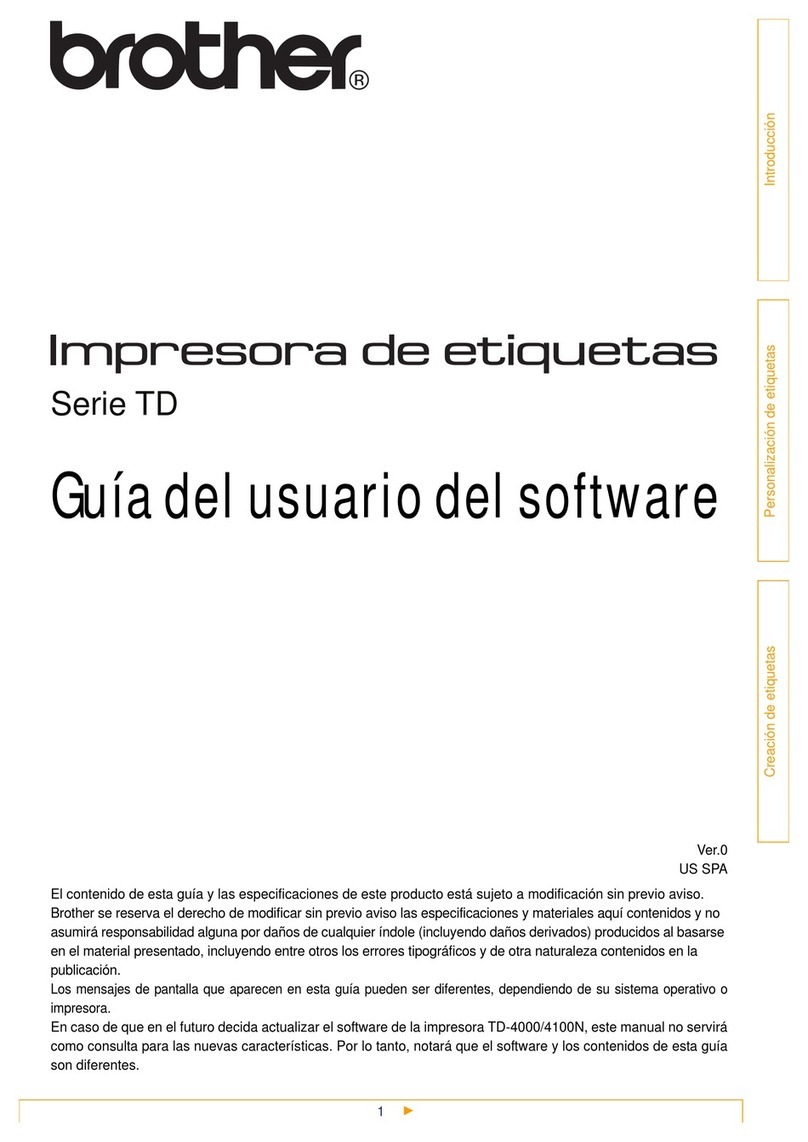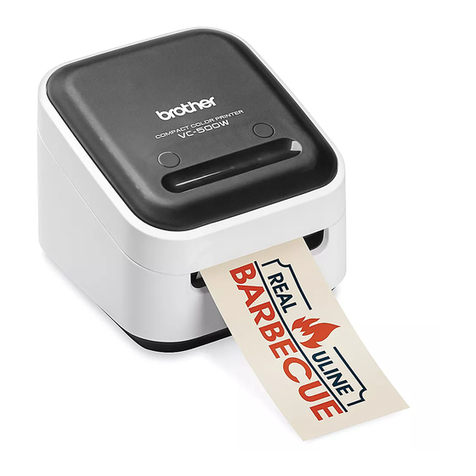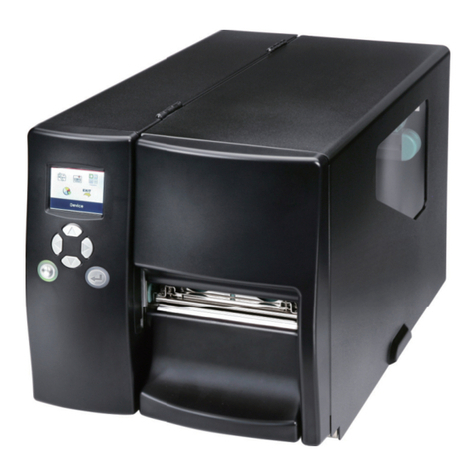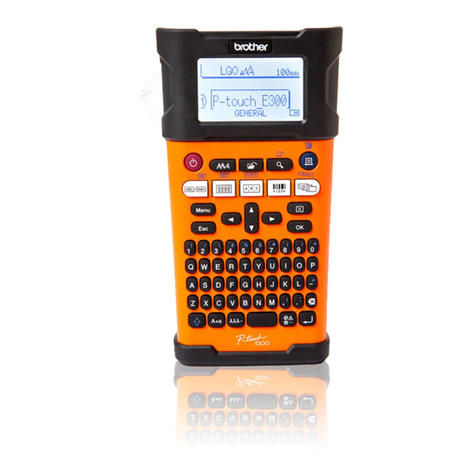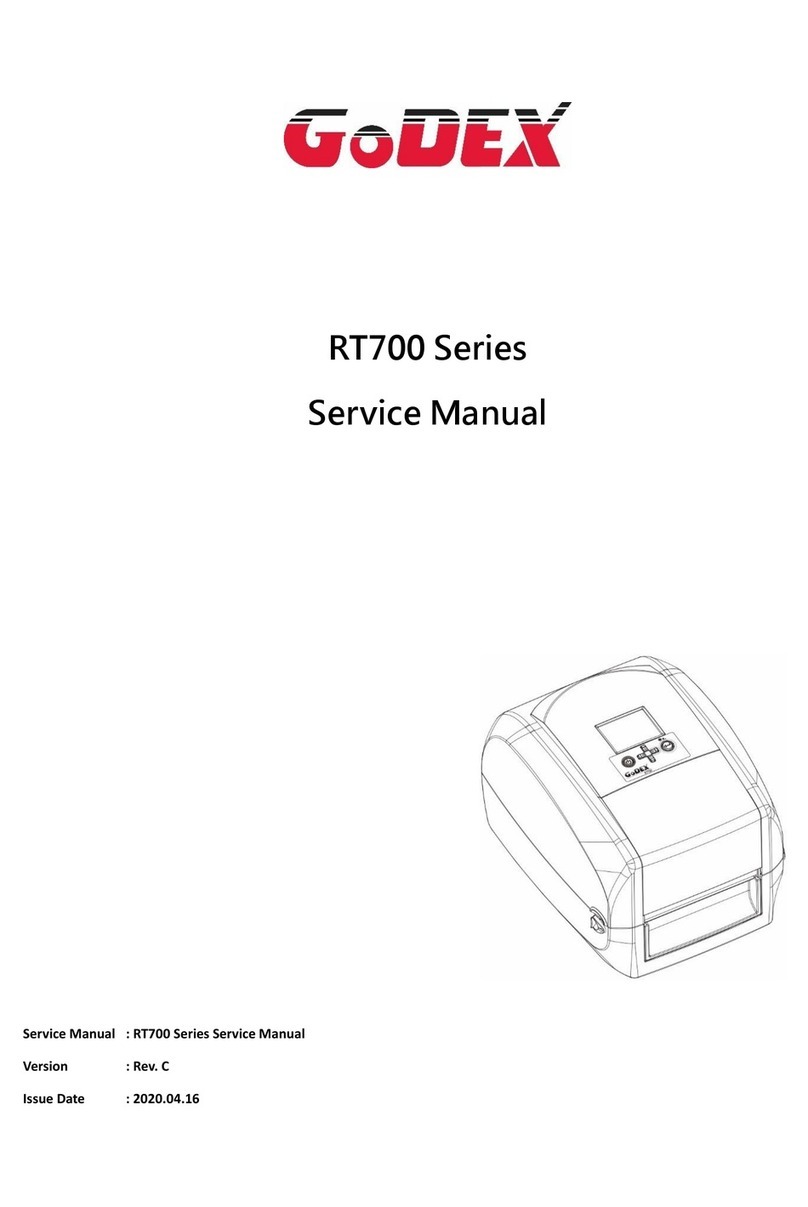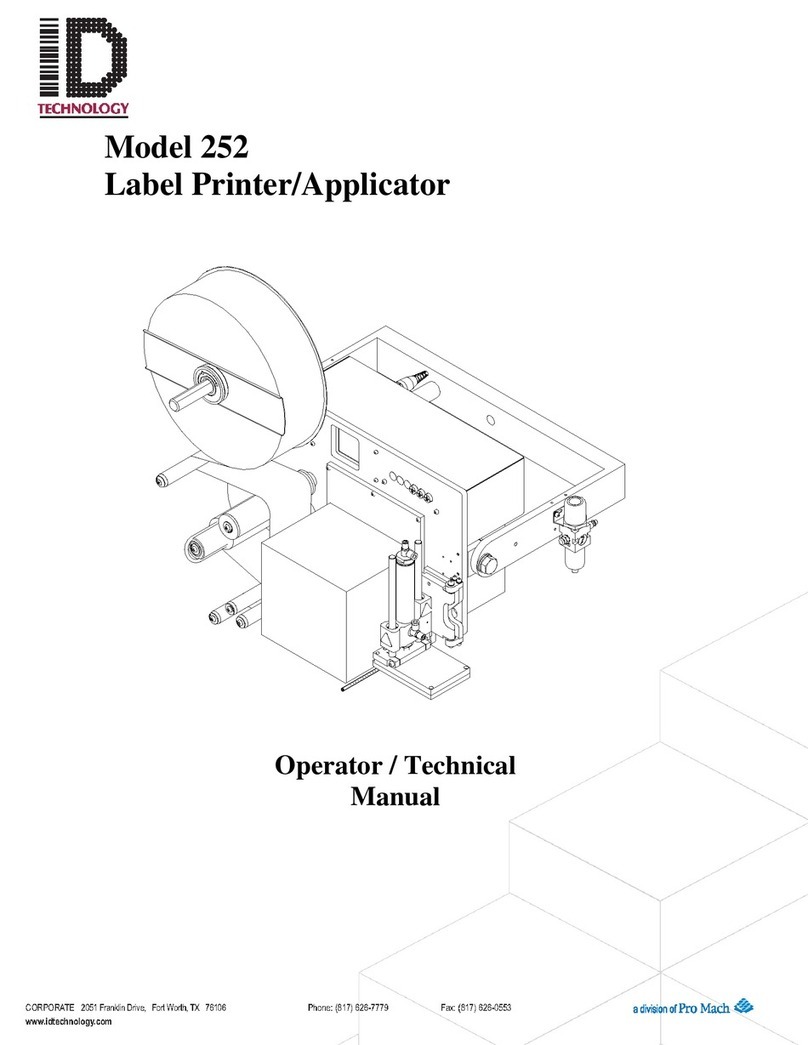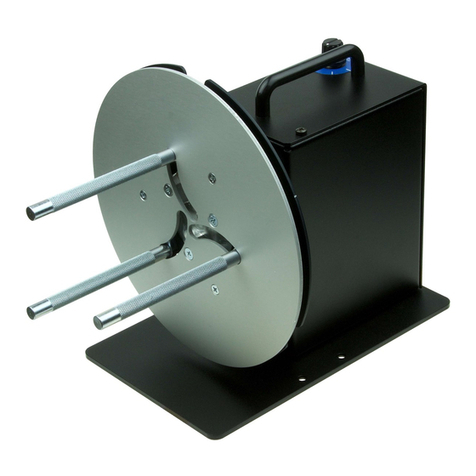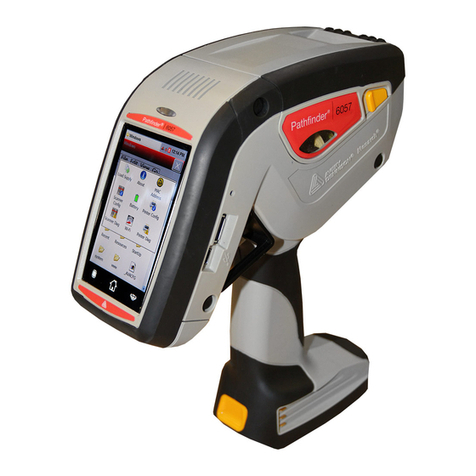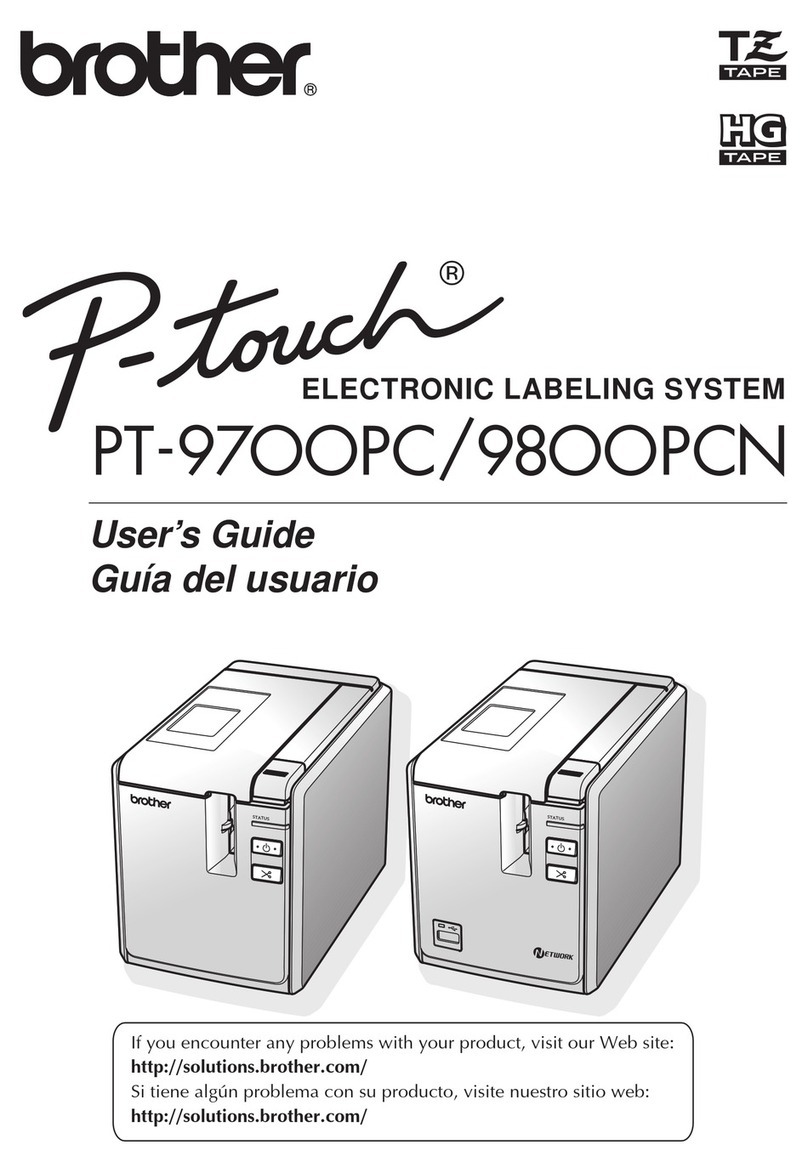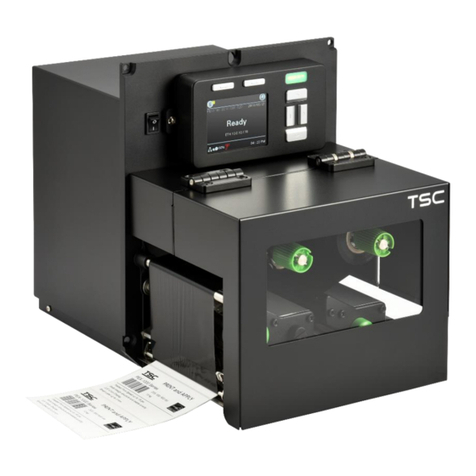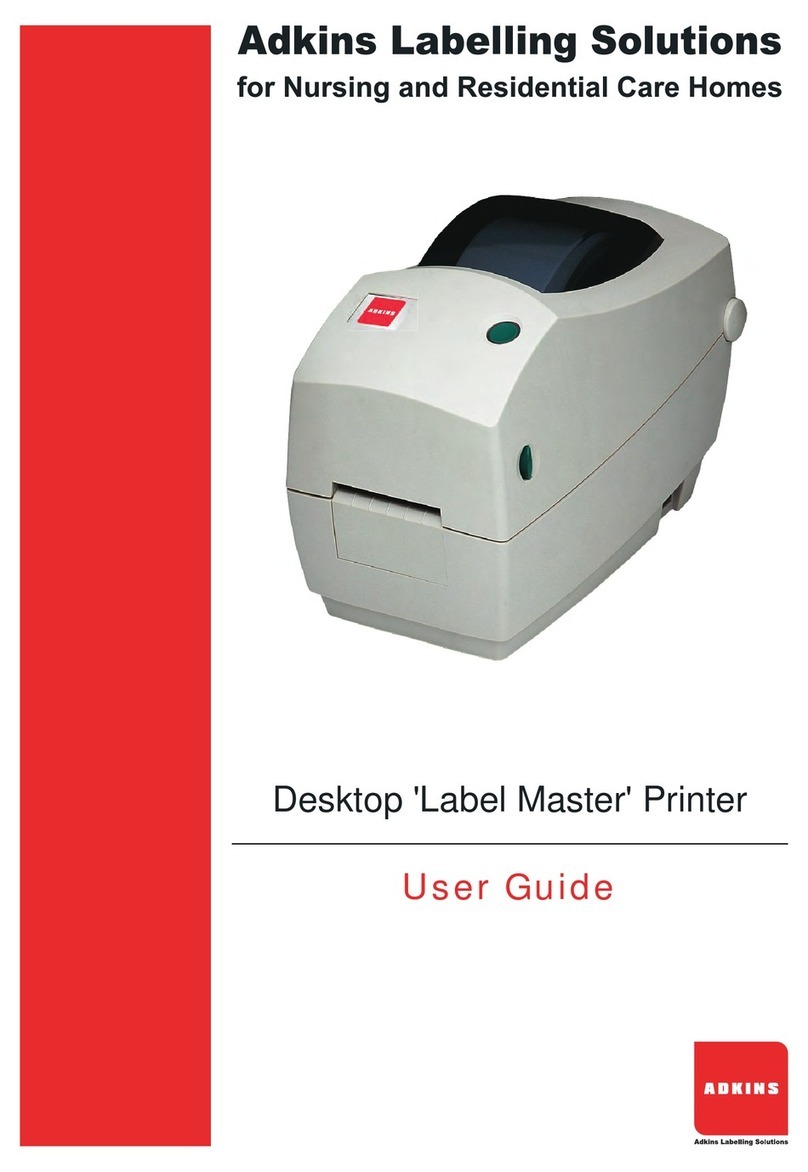
Motor Driver
The 3-phase motor driver is a standard assembly of a leading stepper motor. It ener-
gizes the stepper motor. The step rate is adjustable from 200 up to 1000 steps per
revolution. Standard setting is 500 steps per revolution.
Controller p.c.board
The controller p.c.board comprises a Hitachi H8/532 microcontroller, EPROM with
software, LC-display and short-stroke keyboard. The controller p.c.board controls all
labelling sequences, the LC-display, the keyboard and the nonvolatile memory.
The LC-display has four lines with 20 characters each and a background illumination.
The controller p.c.board combines front panel and controller in one component.
The software
The controlling software of the Collamat®9100 is stored in the EPROM (firmware) and
has the following features:
Modern user guidance
6 digits preselection and batch counter
Adjustable label length dependent suppression of label scanner signal to detect
transparent or preprinted labels
Adjustable goods speed and length dependent scanner signal suppression after
labelling
Programmable adjustment of labelling position on the goods
Programmable adjustment of predispensing
Multiple labelling with electronic setting of gap between labels
Automatic adaptation of dispensing speed by measuring the goods speed by light
barrier or incremental encoder
Storage of 20 labelling programs
Memory protection by access password
Two user levels
Monitoring of label stock and out-of-label, end of paper web, open roller in traction
unit, motor driver OK-signal
Nonstop mode with two Collamat®9100 systems
Multilingual user display
Automatic label scanner adjustment
Full operability during labelling
All peripherals program-controlled - no potentiometers and switches necessary
The Dispenser
The traction unit as well as the other peripherals are mounted on a module rail. All parts
are surface treated to protect from corrosion. The special coating of the traction unit rol-
ler affords permanent torque transmission to the paper web without slip. The force of
the paper web brake is adjustable. The traction roller can be easily turned by hand du-
ring Power OFF for easy threading and installing the paper web.
5999.555-01A 20.08.98 WM Page 6/ 64
